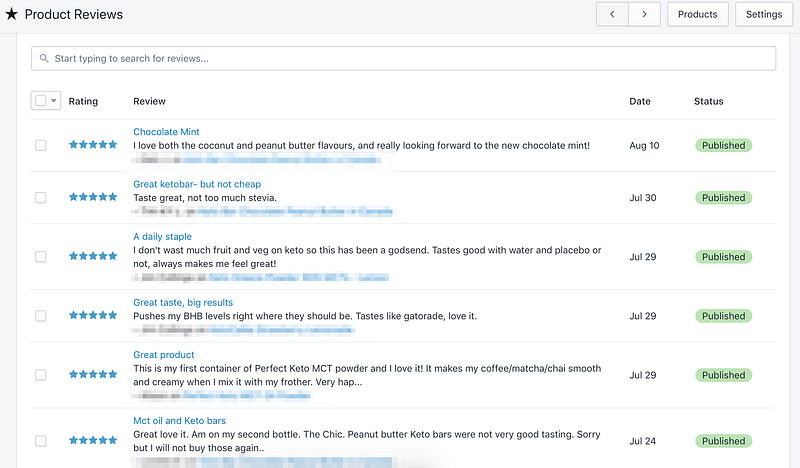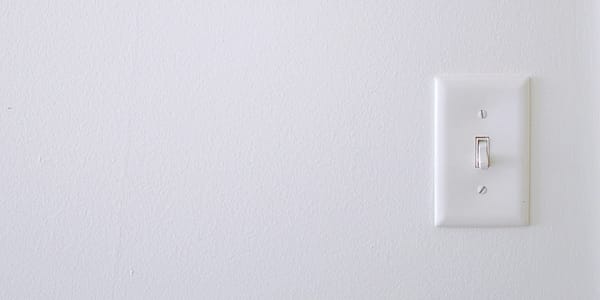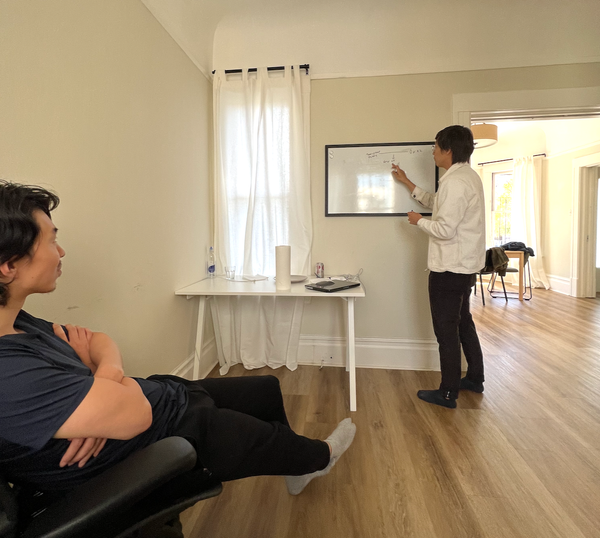How to start an e-commerce store that doesn’t dropship.
I started a e-commerce store in September 2017 that does about $400 a day in revenue. I get asked about the tools, systems and products I…

I started a e-commerce store in September 2017 that does about $400 a day in revenue. I get asked about the tools, systems and products I use often, in this post I will share what works for me.
I don’t dropship, I buy, hold, and ship all inventory.
Daily revenue: $400-$700
E-commerce: Shopify
Shopify Theme: Debut
Shopify Apps: Clearbanc, Delerious Profit, Intercom, MailChimp, Now Back in Stock, Product Reviews, Product Reviews Addon, Sitemapper
Shipping: Canada Post, UPS Brown, DHL
Pick and Pack: N/A
Products: Keto and nootropic products
Wholesale buying: Hubba, Instagram, direct
Reviews: Shopify Reviews
Payment processor: Stripe, PayPal, Coinbase
Analytics: Google Analytics
Advertising: Facebook Ads, Google Ads
Email marketing: Intercom
Referrals: N/A
On-site chat / Support: Intercom
Primary Growth Channel: Google Search Ads
Other Growth Channel: SEO, repeat customers, Facebook Remarketing Ads
Logistics: Uline Boxes, Uline transparent labels, UPS Brown, DHL Express, PO Box,
Printer: Brother HL
T-shirts: TeeSpring
Stickers: Sticker Mule
The Store

Shopify is the best, simple. Only reason I wouldn’t use Shopify would be if you are selling something they don’t allow. The apps, the ecosystem, the UI puts the rest to shame. Start with Shopify and move out only if you have to.
The next step is picking your theme. I am using a built-in theme for Able Cells and don’t think you need to go crazy here, especially not at the beginning. The biggest variable affecting your theme is your catalogue size. If you aren’t selling many products, don’t get a theme designed for a catalogue of a thousand. Think Dollar a Shave club. Themeforest has an excellent selection of single product Shopify themes. If you have a bigger catalogue, 6+ products, Shopify has plenty of themes and they all look good. It comes down to taste. Product and lifestyle pictures will be more important. Use Hubba to find great product pictures, and Unsplash (Andrew, have you heard of these guys?) to source backgrounds.

Reviews are important too. To start, I would use the basic Shopify review app. As you get more fancy I would move into something like Yotpo. It’s important to get real reviews and not fake / juice them. I use an app that sends out review emails to customers at set intervals and includes an easy way for them to review the product from their email. I didn’t think this was necessary at first but it is. I waited too long to focus on review, now I’ve automated the process.

Shipping will be the hardest part of your store for a while. It’s expensive and time consuming, but I recommend doing it by hand until you can’t. I only ship within Canada, so Shopify’s default Canada Post shipping works for me. One of the best features of Shopify is a 5–10% discount on all Canada Post postage. If you are doing international shipping I recommend ShipStation. Remember to setup shipping accounts with FedEx, DHL too as you will get better rates when you need them. This doesn’t take long, leave yourself an afternoon.
Payments
If you can use Shopify Payments I would. It’s easy, it’s expensive and it’s easy. When you start selling don’t focus on your margins, as long as you are making money that’s good enough. Practice making sales, and then you can focus on making better margins.
PayPal is a must. I like to keep a small float in my account for returns or refunds but other than that I deposit into my bank every few days. I don’t recommend keeping a lot of money in your PayPal account.
If you have a Stripe account, or even if you don’t, apply for Stripe Atlas. It’s an incredible service that lets you get a US Corp and Bank Account as a non-US citizen. The process takes a while so don’t make any US plans until you have the final approvals.
Marketing

Signup for Google Analytics, Facebook Business, and Google Ads (formerly Adwords).
Use Shopify’s built in Google Analytics tracking. This will give you the advanced ecommerce analytics. I don’t look at Google Analytics too often but it’s good to know it’s there when you need it. Bounce rate, Google Ads performance and checkout funnels are the most viewed areas for me.
Facebook Business is crucial if you want to advertise on Instagram and Facebook, which you do. The key is to make sure that you get your Facebook Pixel, and that you attach it to your site. The sooner you do that, the bigger your retargeting audience will be.
When possible, use Google Search Ads. Google Search Ads let you present an offer to someone when they have a question or problem. Not only are you more likely to make a sale, if you have a good product, but you are more likely to keep that customer too. Instagram and Facebook ads are better for remarketing given that people spend much of their day on these platforms. If you believe you can create a perfect audience through dimensional targeting on Facebook, go for it, but it won’t beat intentful search.

I bounce between Intercom and Mailchimp for email marketing. Intercom is also my support channel and I like having it all in one app. I have recently been experimenting with Intercom’s chatbot, Operator, and am liking it.
Write your own cart abandonment emails. Make them honest and as personal as possible. I sell expensive products and I assume many people abandon when they see the cost. I call this out directly in my cart abandonment emails and get a lot of responses. Often times it’s people asking for a discount or asking why things are expensive. When I explain why, many understand and buy. Some don’t. But the conversation is there to be had.

I don’t use any list building or opt-in software. Building a list is important but to be honest I stopped caring about it. I didn’t want a shitty popup every time a person came to my site. You either like what I am selling or not, I shouldn’t need to give you a 10% coupon. As I re-read the sentence above, it feels wrong and my marketing brain is telling me to add one back. I might revisit this but stand by my non douche bag conviction. If I was going to build a list, I would use Sumo.
Logistics
I only carry products that are on Hubba. Hubba is like Netflix + Amazon for wholesale buyers. It’s only available in the US right now but I still use it to find, connect and negotiate my deals with brands. Full disclosure, I lead the growth team at Hubba, so yes, I am biased. Hubba shines for a company like mine where the team is small and we don’t use a distributor. Managing logistics via text, email, instagram is a pain. Having it all in one tool is so much better. When we launch ordering in Canada, I will do all my buying through Hubba.
UPDATE — Aug 15,10:06PM
Getting flack on Twitter and HN here for writing nothing but a trojan horse piece of content / AD for Hubba. The truth is that it’s very hard to find reliable brands on the internet and convince them to take a chance on a new Buyer with low minimums. Hubba solves this problem and I happen to work there.
I lead our growth team and a year ago, almost to the day, I realized that I knew very little about the retail space. I decided to put in my own money and learn the business that I was trying to sell. The learnings have been invaluable, and I highly recommend this kind of in depth learning wherever you can.
For completeness sake, I do use Instagram to find new products and if they aren’t on Hubba will engage them via chat / phone. Obviously the conversation moves to Hubba and they tend to sign up on the spot or a few days later. If anyone knows of products that helps connect Buyers to high quality, high integrity verified brands I would be happy to include it here.
*** </UPDATE> ***

Negotiate with all your suppliers. If the standard wholesale discount is 30% off, ask for 40%, when they say no ask why. Don’t be a jerk, but remember that you are going to make them rich. If you believe that, asking for a better discount means you will make money and will stay in the game longer. This will lead to more sales for them.
I discovered Uline too late, it’s a place where you can buy your boxes and packing material at wholesale prices. Don’t spend $2 for a box like I did in the early days at the post office, use Uline from the get go. Pro tip: Don’t use bubble wrap or air baggies for packing boxes, use kraft paper. Kraft paper is the best.
You don’t need a Zebra printer for shipping labels. I use a Brother HL and a paper cutter. It’s less professional but does the job. Another game changer was switching to packing envelopes instead of taping the shipping label to the box. It saves me one minute per box, and looks 10X more professional. Do this from the start.
Get a customs broker. You will likely need to ship stuff to and from the US. I have two brokerage accounts, one with UPS Brown and the other with DHL. I like UPS better, but most of my suppliers use DHL so it paid to have that one too. You need to familiarize yourself with NAFTA too if you are in Canada. There are lots of ways to save money, but you need to read and navigate the forms. Your broker should do this for you, but only you care about your money as much as you do. It helps to check their work in the early days and make sure you are getting all the exemptions you can.
In the early days ship everything yourself. I did that for the first 100 orders, then enlisted my Dad to help. He’s retired and loves the job, I pick and pack and he takes the boxes to the post office the next morning. This won’t be scalable in the long run, so start getting prices for pick and pack warehouses sooner than later.
Get a PO box. You don’t want your actual address on packages. It costs $100 / year in Canada and is well worth it.
I love stickers and assume others do too, besides, it shows that you care a little more, which you do. I use Sticker Mule and put 1 or 2 in each of my parcels. Don’t waste your time even shopping prices, they are the best. Pay what they tell you it costs. The 2" circle ones seem to be the most versatile.
Get a 1–800 number. OpenPhone is your best bet. It’s affordable and works really well. Best part is the ability to text using your 1–800 number.
Shopify Apps
Chatbot app that sends out thank you emails to your customers, and can even setup basic marketing campains for you on Facebook. I use it for the simple text based thank you emails on first and 2nd order. I have tried the marketing features and they are good, but basic. If you are serious about growth, you will need to up your ad game at some point.
Started by the amazing Andrew D'Souza and Michele Romanow, Clearbanc gives you a business loan using your Shopify store’s data. Sound too good to be true? It isn’t, it’s simply not what you are used to. If have a business model where ads power your sales, consider getting a quote from them.
Profit ($4.99 / month):
Fantastic app that lets you track your cost of goods sold and true shipping costs. If you are like me and offer free shipping, you need to make sure that you are still profitable. For $5 / month, this is well worth it. Make sure you do the weekly work of adding your shipping expenses as that can’t be automated.
Out of stock notifications ($4.99 / month):
Let’s users drop their email when an item is out of stock and then emails them when it comes back in. Simple but effective.
Sitemapper Pro ($2.49 / month)
Handles basic SEO tasks for you. Not needed but worth the $2.49 given how much your time is worth.
Product Reviews Addon ($14 / month)
Automatically sends out review emails to customers X days after they buy something. Crucial for building up reviews. In the early days I tried using Intercom for this, but it wasn’t as effective.
Conclusion
On Instagram, you will see stories of millionaire dropshippers and other lies. You can make a lot of money dropshipping. It’s less work and scales horizontally. However, I hope this post has shown you that the tools exist to build, buy, and ship yourself.
Happy to dive deeper into these topics if you want, let me know on Twitter @kentf or in the comments.
PS: Full confession. I don’t drive a lambo or Ferrari, I drive a Hyundai Santa Fe … your milage may vary.




